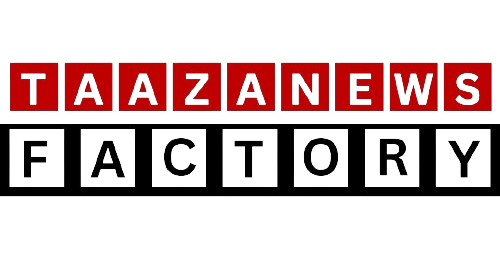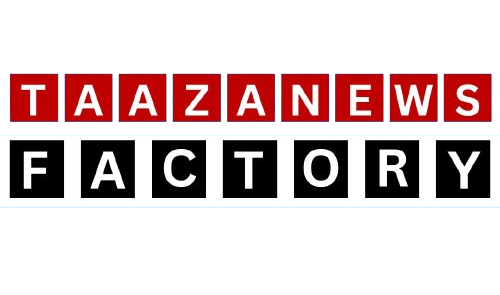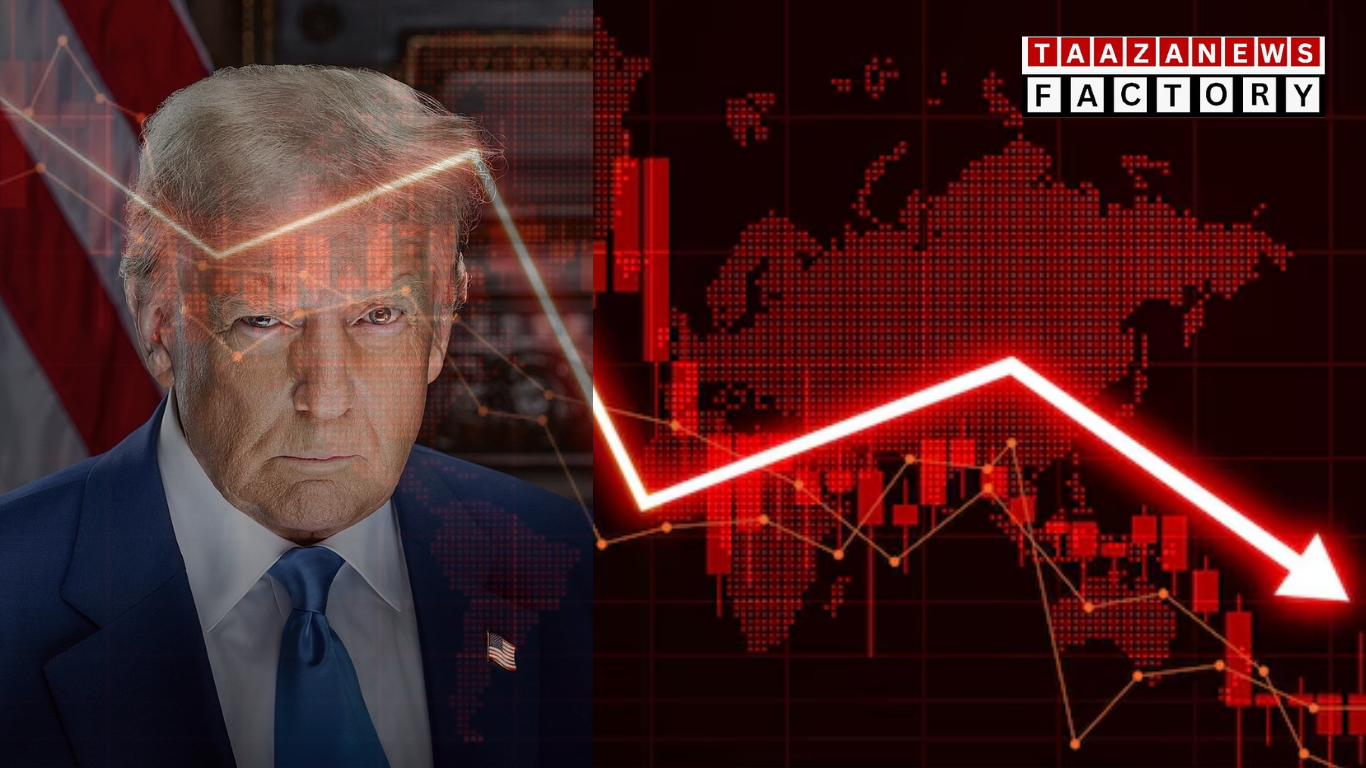Wall Street faced a turbulent start to the week on Monday, March 31, as the looming Trump Tariffs, set to be unveiled on April 2, sent shockwaves through U.S. financial markets. The S&P 500, a key barometer of American economic health, slid to 553 in early trading—a stark reflection of investor unease—while the Nasdaq joined it in marking a six-month low. With just over 24 hours until President Donald Trump’s self-proclaimed ‘Liberation Day,’ the uncertainty surrounding the new tariff regime has sparked widespread sell-offs, rattled global trade expectations, and left analysts scrambling to predict the fallout.
Markets in Freefall: A Snapshot of the Decline
At 10:15 a.m. EDT (adjusted from the 11:15 a.m. IST data point), the SPY—an exchange-traded fund tracking the S&P 500—hit 553.01 USD, down nearly 1% from its previous close. This drop mirrored broader market sentiment, with the S&P 500 index itself opening at 5,524.77 points—a 1.01% decline from Friday’s close of 5,580.94 points—and hovering around 5,527.19 points by mid-morning, according to Marketwatch trends. The Dow Jones Industrial Average followed suit, shedding 0.68% to open at 41,293.25 points compared to its prior close of 41,583.90 points, later stabilizing at 41,510.63 points, a 0.20% dip. The tech-heavy Nasdaq also stumbled, plunging to its lowest level since September 2024.
Financial analysts point to the Trump Tariffs as the primary catalyst. “The markets hate uncertainty, and right now, we’re flying blind,” said Sarah Linwood, a senior strategist at Hudson Capital. “Investors are dumping stocks tied to global supply chains, fearing a repeat of the 2018 trade war chaos.” The lack of concrete details from the White House—such as specific tariff rates or targeted countries—has only deepened the panic.
Trump Tariffs: What We Know So Far
President Trump has billed April 2 as ‘Liberation Day,’ a pivotal moment to roll out reciprocal tariffs aimed at leveling the playing field in global trade. Building on existing duties on steel, aluminum, and auto imports, the Trump Tariffs are expected to extend to critical sectors like pharmaceuticals, lumber, semiconductors, and copper. During his campaign, Trump floated a 25% tariff on imported vehicles, a pledge that now appears imminent as part of this broader strategy to boost U.S. manufacturing.
Yet, details remain scarce. The administration has not clarified how rates will be calculated, which nations might secure exemptions, or how the policy will mesh with existing trade agreements. White House spokesperson Emily Carter reiterated Trump’s stance in a Sunday briefing: “These tariffs will protect American workers and restore our industrial might. The world has taken advantage of us for too long.” Critics, however, warn that the opacity is stoking market volatility, with ripple effects already visible.
Global Ripples: Trade Partners Brace for Impact
The Trump Tariffs have set off alarm bells worldwide. The European Union, a major U.S. trading partner, signaled it may retaliate if the measures hit its auto and tech exports. “We’re prepared to defend our industries,” said EU Trade Commissioner Lena Moreau. Canada, still reeling from earlier steel tariffs, echoed similar sentiments, while China vowed “resolute countermeasures” to shield its economy.
Trending discussions on X highlight growing fears of a trade war redux. Economists recall the 2018 U.S.-China tariff spat, which drove up costs for American consumers and disrupted global supply chains. Dr. Alan Kessler, an international trade expert at Georgetown University, cautioned, “If the Trump Tariffs escalate tensions, we could see a domino effect—higher prices, slower growth, and strained alliances.”
Wall Street’s Winners and Losers
Early trading revealed stark divisions among Dow Jones stocks. Companies with heavy international exposure took the hardest hits. Nvidia Corp., reliant on semiconductor imports, dropped 2.1%, while Amazon Inc. and Microsoft Corp. each fell over 1.5%. Boeing Co., Goldman Sachs Group Inc., Caterpillar Inc., and JPMorgan Chase & Co. also saw declines exceeding 1%, reflecting fears of disrupted supply chains and shrinking profit margins under the Trump Tariffs.
Meanwhile, domestically focused firms held their ground. Walmart Inc., Coca-Cola Co., and Verizon Communications Inc. traded in the green, buoyed by their limited reliance on imports. Apple Inc., despite its global footprint, edged up 0.3%, possibly due to investor confidence in its ability to shift production. “The market is rewarding companies that can weather the storm,” noted Linwood.
Expert Takes: Boom or Bust?
Analysts are split on the long-term implications of the Trump Tariffs. Michael Grayson, a veteran Wall Street trader, sees potential upside: “Short-term pain could lead to long-term gain if manufacturing jobs return. The key is execution—Trump needs to avoid alienating allies.” He predicts a volatile week but suggests the market could stabilize once details emerge.
Conversely, Dr. Priya Anand, an economist at Stanford, warns of a broader fallout. “These tariffs risk reigniting inflation just as the U.S. economy is finding its footing,” she said. “Consumers will pay more for cars, electronics, and even medicine.” Anand points to the 2018 steel tariffs, which raised construction costs and squeezed small businesses, as a cautionary tale.
India and Emerging Markets: A Double-Edged Sword
The Trump Tariffs could reshape trade dynamics for emerging economies like India. As a key supplier of steel, pharmaceuticals, and auto parts to the U.S., India faces potential losses if tariffs hike costs. “Exporters will feel the pinch,” said Neha Kapoor, a trade analyst in New Delhi. “Margins are already thin in these sectors.”
Yet, there’s an opportunity amid the chaos. Kapoor suggests India could pivot to alternative markets or double down on domestic production, aligning with the ‘Make in India’ vision. “If the U.S. pulls back, India might step up as a manufacturing hub,” she added. Similar dynamics could play out in Southeast Asia and Latin America, reshaping global trade flows.
Historical Context: Lessons from the Past
The Trump Tariffs echo policies from Trump’s first term, when duties on Chinese goods sparked a years-long trade war. Back then, the S&P 500 weathered initial dips but rallied as businesses adapted. Today’s stakes feel higher, with the global economy still fragile from pandemic aftershocks and geopolitical tensions. “This isn’t 2018,” Anand warned. “The world can’t absorb another shock so easily.”
Supporters argue the tariffs reflect a necessary shift. “America’s trade deficit has ballooned for decades,” said Rep. Tom Hargrove (R-Texas). “Trump’s forcing a reckoning.” Detractors, including Sen. Maria Delgado (D-Calif.), counter that the policy risks isolating the U.S. at a time when cooperation is crucial.
Consumer Fallout: Prices on the Brink
Beyond Wall Street, the Trump Tariffs threaten Main Street. Imported goods—from cars to smartphones—could see price hikes within months. “A 25% tariff on vehicles alone could add $5,000 to the average car price,” estimated auto analyst Jake Russo. Small businesses, reliant on affordable imports, may also struggle to pass costs onto consumers amid tepid demand.
Trending chatter on X reflects growing public unease. One user wrote, “Groceries are already killing me—now cars too?” Another quipped, “Liberation Day? More like Inflation Day.” The sentiment underscores a disconnect between Trump’s vision and voter realities.
Markets Look Ahead: What’s Next?
With April 2 less than a day away, Wall Street is bracing for more turbulence. “We’re in a wait-and-see mode,” said Grayson. “If Trump offers exemptions or a phased rollout, the bleeding might stop. If not, buckle up.” Futures markets suggest a choppy Tuesday, with traders betting on everything from a sharp rebound to a deeper slide.
The Federal Reserve, already grappling with inflation concerns, may also weigh in. While no rate changes are scheduled, Fed Chair Jerome Powell could signal adjustments if the Trump Tariffs threaten economic stability. “The Fed’s watching closely,” Linwood noted. “This could force their hand.”
Conclusion: A Defining Moment
The Trump Tariffs have thrust the U.S. into uncharted territory. As the S&P 500 lingers at 553 and markets teeter, April 2 looms as a make-or-break moment. Will ‘Liberation Day’ deliver on its promise of economic renewal, or will it unleash a wave of unintended consequences? For now, Wall Street—and the world—holds its breath, caught between hope, fear, and the weight of uncertainty.
Also Read:
Tiger Woods और Vanessa Trump के रिश्ते की पुष्टि – जानिए पूरी कहानी
5 धांसू ऑफलाइन बिज़नेस, जो सिर्फ 20 हज़ार में शुरू होंगे और हर महीने 50 हज़ार तक की कमाई देंगे!
Vicky Kaushal Net Worth: मुंबई के छोकरा से बॉलीवुड के सुपरस्टार तक, जानें कैसे बने करोड़पति!









